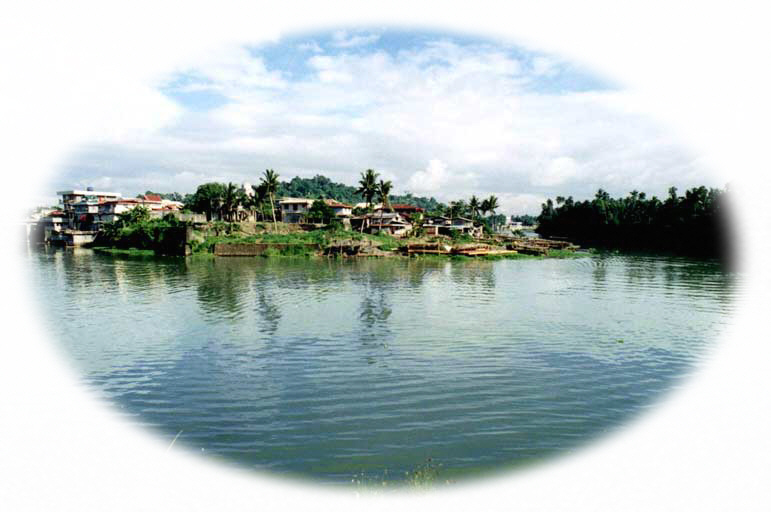
Brief History of the Province of Laguna
The Province of Laguna was named after the Laguna de Bay, the body of water that forms its northern boundary. Laguna de Bay, in turn was named after the town of Bay, the first provincial capital. The province and its surrounding regions was conquered for Spain in 1571 by Captain Juan de Salcedo with the band of one hundred Spanish-Mexican soldiers and many Bisayan allies. Seven years later, two Franciscan friars started the work of Christianization.
In 1577, the Franciscan missionaries arrived in Manila, and, thereafter, in 1578 they started evangelizing Laguna, Rizal, Tayabas (now Quezon) and the Bicol Peninsula. Fathers Juan de Placencia and Diego de Orepesa were the earliest Fransicans sent to these places. From 1580, the towns of Bay, Caliraya, Majayjay, Nagcarlan, Liliw, Pila, Santa Cruz, Lumban, Pangil and Siniloan were founded. In 1678, Fray Hernando Cabrera founded San Pablo de los Montes (now San Pablo City) and built a wooden church and convent considered as the best and finest in the province.
In 1670, delimitation of borders were made between Lucban, Majayjay and Cavite. The populous town at that time was Bay, the capital of the province until 1688, when the seat of the provincial government was moved to Pagsanjan, and later, in 1858 to Santa Cruz, In 1754, the Province of Laguna and Tayabas were divided, with the Malinao River separating the towns Majayjay and Lucban.
The province became bloody battle ground for the Chinese during the two instances that they rose in revolt against Spain. In 1603's, they fortified themselves in the highlands of Cavite and Lumban, surrendering in Pagsanjan a year later.
The loyalty of the people of Laguna to the crown was tested during the British invasion (1762-1764) when thousand Filipinos rallied to its defense. When a detachment of British troops under Captain Thomas Backhouse entered the province in search of silver cargo of the galleon Filipino, Francisco de San Juan of Pagsanjan led a band of volunteers that fought them. The battle was in several engagements in and around the town which was then the provincial capital (1688-1858). Captain Backhouse plundered the town and burned its newly constructed church but San Juan succeeded in escaping with the precious hoard to Pampanga where the treasure greatly bolstered the defense effort of Simon Anda. For his heroism, San Juan was made a brigade commander and alcalde mayor of Tayabas (now Quezon) province.
If Filipino loyalty gradually degenerated into bitter hostility, it was the fault of the Spaniards themselves, including the clergy. They perpetrated such grave abuses that the settlement of the Filipinos was fanned into a rising flood of nationalism. In the 1840, for instance, religious intolerance led the people of Majayjay, Nagcarlan, Bay, and Biñan to join the revolt of Hermano Fule (Apolinario de la Cruz) of Lucban, Tayabas. The persecution of Dr. Jose Rizal and his parents toward the end century further aggravated the situation, so that by 1896, thousand of patriotic inhabitants, especially of Bay, Los Baños, Nagcarlan, Magdalena, Santa Cruz, and Pagsanjan had joined the revolutionary Katipunan.
Laguna was one of the eight provinces to rise revolt against Spanish misrule led by Generals Paciano Rizal of Calamba, Severino Taino of Pagsanjan, Agueda Kahabagan (woman general) of Calauan, and Miguel Malvar of Batangas. The ill-equipped Filipino forces fought the well-armed enemy until on August 31, 1898, when the last Spanish garrison surrender to the victorious patriots in Santa Cruz. The province was cleared of Spaniards. There had been only one respite, the Pact of the Biak-na-Bato on December 14 to 15, 1897.
Laguna actively supported the first Philippine Republic proclaimed at Malolos on January 23, 1899. Her two delegates to the Malolos Congress, Don Higino Benitez and Don Graciano Cordero, were natives of Pagsanjan.
Upon the outbreak of the Filipino-American war (1899-1901), General Juan Cailles and General Paciano Rizal led the defense of Laguna until June 30, 1901, when surrender became inevitable. Cailles became the first Filipino Governor of Laguna under the American flag.
The Province of Laguna progressed rapidly in peace. Roads were built, schools were established, and in 1917, the Manila Railroad Company extended its line to as far as Pagsanjan.
During the Japanese occupation (1942-1945), Laguna was a center of resistance despite the presence of Makapili traitors.
Today, peopled by 1,630,963 (1995 census) industrious citizens and possessing a total area of 175,973 hectares of land, Laguna produces millions of pesos worth of coconuts, rice sugar, citrus fruits, lanzones and other products. Tourist flock to its beauty spots, especially Pagsanjan Falls, Los Baños Hot Springs, Makiling National Park, Sampalok Lake and many others.